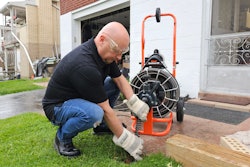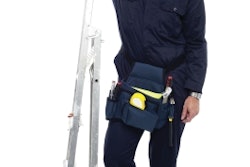
You know the best tool to clear a clogged kitchen sink is very different from the right tool to clear a main drain, but did you know that though one tool could be used to clear a sink, bathtub and toilet, the best tool is different in each case?
Clogged sink or laundry tub
If the clog is in a small drain line (1-1/4” to 3”) use a machine that has smaller-diameter cables. Hand-held models that carry 1/4”, 5/16” or 3/8” cables are best suited for this application because small-diameter cables are flexible enough to get around tight bends.
Clogged or slow draining bathtub or shower
The best tool for clearing a clogged or slow-draining tub is a water ram. Tubs often drain through drum traps that are very difficult to get through with a cable. The water ram uses a burst of compressed air to create a shock wave that follows the path of the water and isn't affected by tight bends and narrow lines. The shock wave travels down the line and knocks out the stoppage without harming the pipes. The water ram also works well in trailer homes where drains can be difficult to clear using cables because they have narrow drain lines with tight bends.
Clogged toilet
The best tool for clearing a clogged toilet is the closet auger. No other tool in your arsenal will go through the bowl as quickly and easily. The spring is flexible enough to get through the tight bends in the bowl.
Cutting tree roots
Heavy root stoppages require larger-diameter cables (5/8” or 3/4” continuous cables, or 1-1/4” sectional cables) that have the torque to cut tree roots and other difficult obstructions. Consider a machine with a variable-speed automatic feed when working with cables of these sizes. A 100-foot cable can weigh 100 pounds or more. At a feeding rate of 20 fpm, an automatic feed makes getting the cable into and out of the line easier and faster.
Clearing grease clogs
For restaurants where grease clogs are a constant problem, water jets are the tool to use. Jets are ideal for clearing grease, sand, ice, and other soft stoppages from drain lines that cable machines have a hard time clearing. Jets use a stream of high-pressure water that hits the stoppage and flushes it away. The thrust of the nozzle drives the hose down the line and gives you wall-to-wall cleaning action.
Retrieving objects
To retrieve objects, rags, children’s toys, broken cables, etc., cable machines are the best tool to use. Begin by determining the size of the drain line to find the right cable machine for your application.Then select the appropriate size retrieving tool.
Flushing away sand and mud
Water jets are ideal for clearing sand, mud, and debris-choked lines, as well as grease and other soft stoppages from drain lines.
Removing ice clogs
Water Jets are a great tool for clearing lines clogged with ice. They work well in both plastic and metal pipe. The larger gas jets can clear a foot of ice per minute in a 4-inch line.
Choosing the right tool makes you money
Choosing the right tool for the job will clear the line faster and keep you safe and satisfied with a job well done.



















